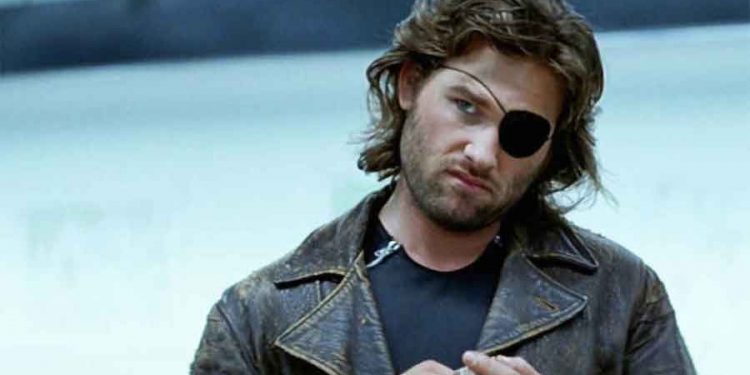As a means of coming to terms with an apocalypse-esque world, we can always imagine how much worse things could be. John Carpenter’s “Escape from New York” (1981) is designed to do just that. Filmed and released in the peak years of America’s late 20th-century urban collapse, it begins with a few title cards to set the stage. Crime has risen across America by 400% by the late ’80s. By the early ’90s, the government has designed a new superjail 22 square miles of the island of Manhattan, emptied, devoid of citizens and cops, cut off from the world, surrounded by high walls and police guns — when a prisoner is sent to this jail, the sentence is for life.
It’s hard not to laugh at the corniness that none other than Air Force One has just crashed into this prison-city, but that’s exactly what Carpenter decides to sell us. Hijacked by the “People’s Liberation Front of the United States” en route to an arms conference with Russia and China, carrying with it Mr. President (Donald Pleasance), a doughy bald-headed short man not dissimilar to a pit bull, and with him a secret tape recording of vital importance, the plane is flown right into downtown. Stowed away in an escape pod, the president is the only survivor the crooks can find to kidnap when they arrive at the scene.
The police show up too, but too late. The president’s already gone and threatened with death if the small army surrounding the prison tries to step one foot on the island. The criminals tell the cops to get lost while they draw up the terms of a ransom. But Police Commissioner Bob Hauk (Lee Van Clef) has more thrilling plans.
He decides to try and conscript one Snake Plissken (Kurt Russell), former US Army commando and present convicted bank robber awaiting deportation to the jail of Manhattan, to the job of saving Mr. President. The police supply Snake with a minor arsenal of weaponry and a silent hang-glider for sneaking into the city. If Snake can retrieve the president within no more than 24 hours (the remaining time of the arms conference), he gets a full pardon for his crime, no questions asked. If he misses the mark by one second, the deal’s off. Hardened ass-kicker Plissken, a longhaired Tom Brady with an eyepatch, mulls over it for a few minutes and then decides to give the viewer a show.
The movie believes in its hero too much to ever let a sense of real suspense seep into its attitude. But what becomes more interesting is the minor psycho-world that results from turning Manhattan into a crime asylum. It’s not just a matter of bombed-out tenements and abandoned car carcasses, there’s an insane will to live still at work. Scavenger-thieves climb out of the sewers to search for supplies at night. Con men and murderers sit next to each other watching vaudeville performances in the old theatres. One cabbie (Ernest Borgnine) decided to stick to his trade and now ferries stragglers up the avenues in his armored taxi. And central to everything is the murderous aristocrat that “runs” most of the city, and who Snake has to take back the president from — the “Duke” (Isaac Hayes).
The lovable schlock of the streets of New York evokes a movie craziness limited to American films in the ’80s, action movie logic where submachine guns never run out of ammunition, people have the first name “Snake” and there is the generalized insanity of a major metropolis becoming a jailhouse.
Despite the depression possible in this dystopian vision of America, in the sight of an unlit skyline, Carpenter’s movie becomes a rebellious middle-finger, an anarchistic, anti-authoritarian punk growl dedicated to those fed up with a broken world. Snake blasts away to save the day, but that doesn’t stop the scumbag president from becoming more of an eggheaded brute the longer he’s on screen. It becomes apparent to us that maybe the sort of leader complicit in the building of this massive unruled jail cell isn’t so decent of a man to save in the first place. And how much better is that world outside the walls?
It’s a story of a prison built by evil imbeciles. It’s a story of mass confinement on an urban island. It’s the story of a hero who doesn’t buy a word of the politician’s hot air. It’s the story of a city abandoned.
Call it a parable for our own times.





